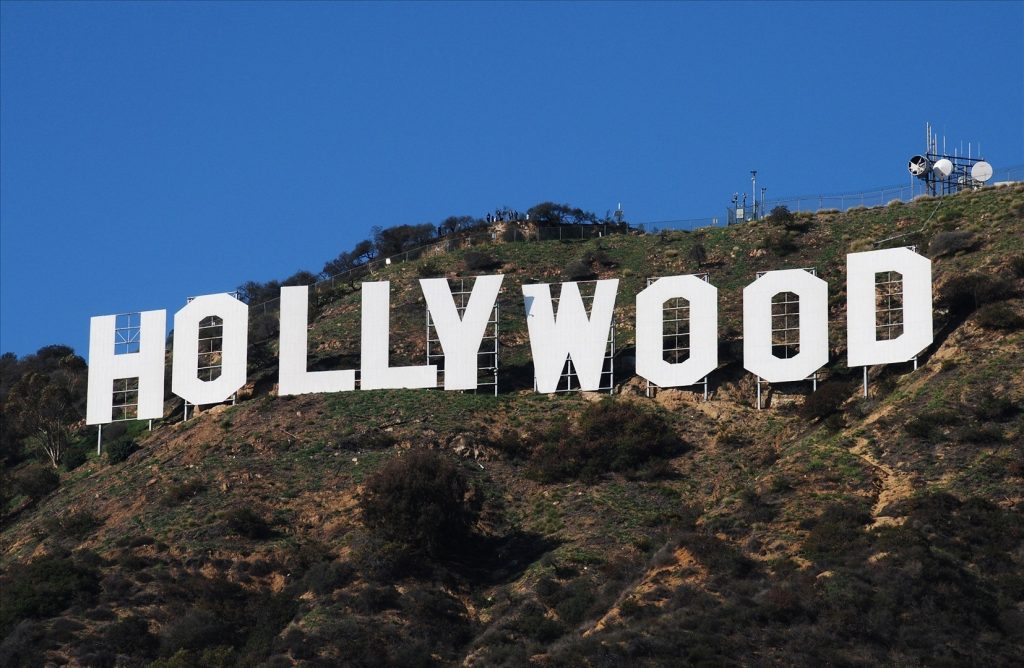
Photo: gomighty
What was originally intended to be an advertising billboard for a local real estate company now has become one of the most recognized signs in the entire world. Originally reading “HOLLYWOODLAND” it was designed to sell homes in a new housing development being built just outside the Hollywood district of Los Angeles, California in 1923.
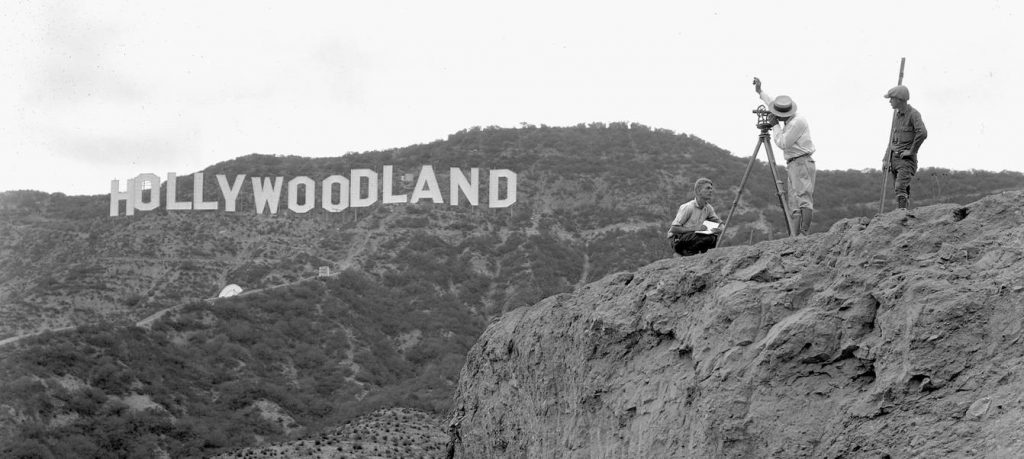
Photo: thepandorasociety
The sign was massive to say the least. It had 13 letters that were roughly 30 feet wide, and it was over 350 feet long. Each letter stood 45 feet tall, which you would think would be sufficient enough to get the point across. Even though it was only 1923, it was still Hollywood where it’s a “go big or go home” mentality. So to make it even more visible, over 4,000 lights were added, to each letter, as well as spotlights shining from below.

Photo: waterandpower
The man said to be responsible for the sign, at least the man that paid for it, was Harry Chandler. He wanted to have the most extravagant billboard possible for his new upscale housing development. He then contracted the Crescent Sign Company to install the massive sign at an estimated cost of $21,000, which equates to roughly $350,000 today. Pretty substantial investment just for a sign, especially one that was originally designed to stay just over a year.
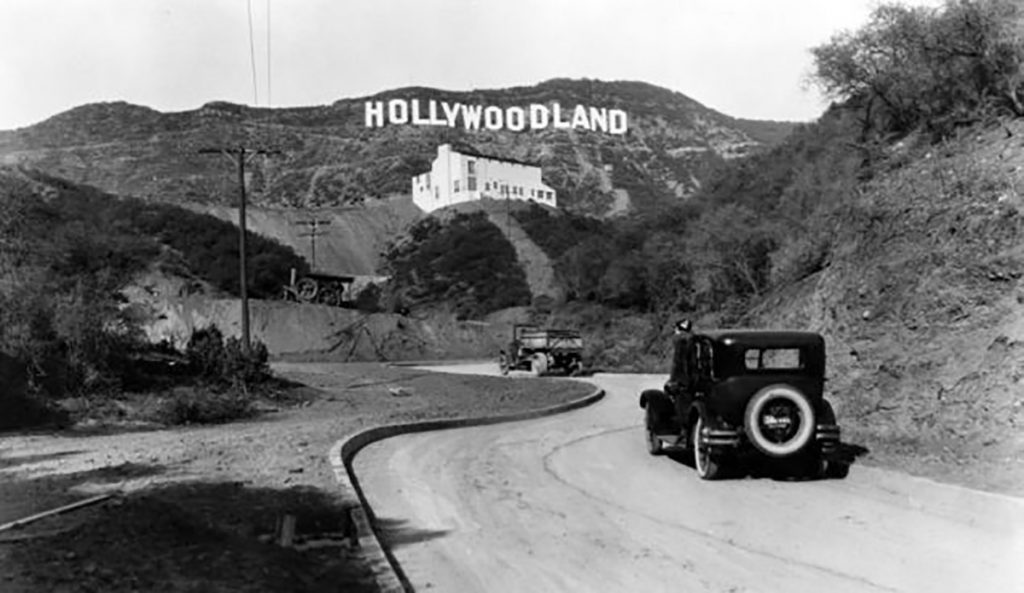
Photo: petrolicious
The plan was to have the sign light up in three different sections, first “HOLLY”, then “WOOD”, and eventually “LAND” punctuated by a giant period. By the end of the year in 1923 the sign was completed and apparently it was quite a site to behold. This was long before the glitz and glamour of Las Vegas or anything like that, so one can only imagine that when that thing lit up for the first time, people’s minds were blown.
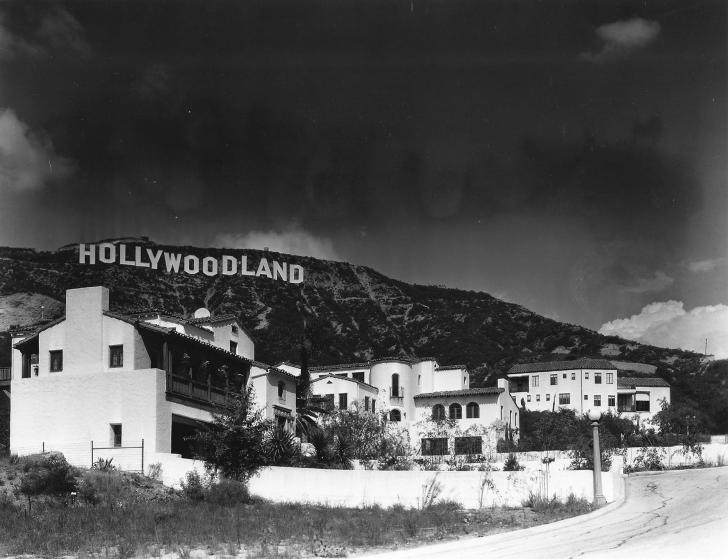
Photo: time
As we mentioned before, the sign was originally a temporary thing. But it had such a significant impact on the area and quickly became associated with pop culture as the golden age of Hollywood ran wild. But the materials used were not intended for the long term and quickly began to deteriorate. Nonetheless, the sign stood and represented the area for quite some time thanks to the official sign caretaker, Albert Kothe. However, in the early ’40s it was Kothe that would be the one to cause some of the most significant damage to the sign. He got intoxicated behind the wheel of his 1928 Ford Model A and lost control of the car as he was rounding a comer at the top of Mount Lee. He then went off the cliff that happened to be directly behind the illuminated “H”. Somehow he managed to escape unscathed, but the same could not be said for the car, or his beloved “H”.
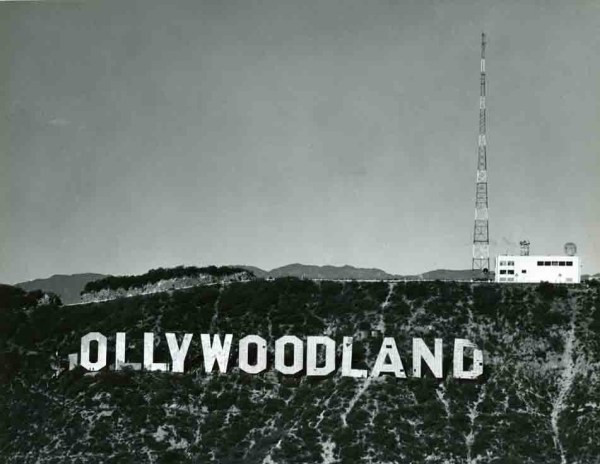
After Kothe wrecked his car into the “H”
Photo: hollywooodphotographes
By 1949, the Hollywood Chamber of Commerce began to get involved with the sign. They made arrangements with the Los Angeles Parks and Recreation Department to have the sign repaired, but only on one condition, “Land” had to go. They wanted the sign to represent the whole district of Hollywood, not just the “Hollywoodland” housing development. The parks department required that the Chamber cover all future costs of the light bulbs required to keep the sign illuminated. Which of course meant the Chamber decided not to replace the bulbs at all. For a few years, the sign remained in good shape, although the wood and sheet metal used were still unprotected and it was only a matter of time before the deterioration began to take hold.

The sign at its worst during the ’70s
Photo: underthehollywoodsign
During the 1970’s the sign might have been at its worst. The top half of the first “O” had splintered and fallen off, making it appear like a lower case “u”, and the third “O” was gone completely. However that all changed in 1978 when none other than the founder of Playboy magazine, Hugh Hefner stepped in to start a public campaign to restore the dilapidated landmark. He wanted to have it done right this time, with a more permanent structure in place so that it would never again reach the point it had previously. Apparently nine different donors stepped in and gave $27,777.77 each, totalling just under $250,000, to sponsor the new letters. These new letters would have a foundation of concrete, and were made using steel columns and support structure.

Photo: flickr
Some of the names on that donation list may or may not surprise you; of course, Hefner was one, Warner Bros. Records, founder of the Kelley Blue Book Les Kelley, and rock star Alice Cooper. Apparently Cooper had done it in memory of his close friend and comedian Groucho Marx who had joked that he would donate an “O” from his own name to repair the deteriorated sign.

Photo: shutterstock
The Hollywood sign has been and will most likely continue to be one of the most significant pieces of American pop culture ever known. To some people it might resemble home, or their favorite movie. But there is no question that when you see that sign, you see America.
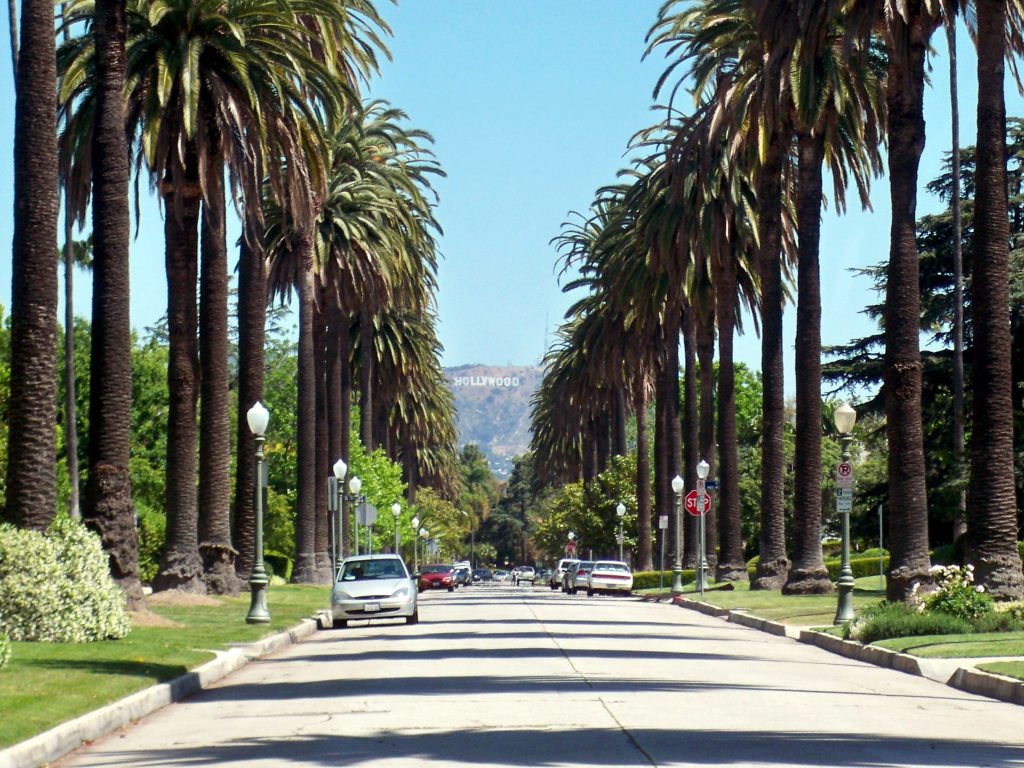
Photo: wiki

